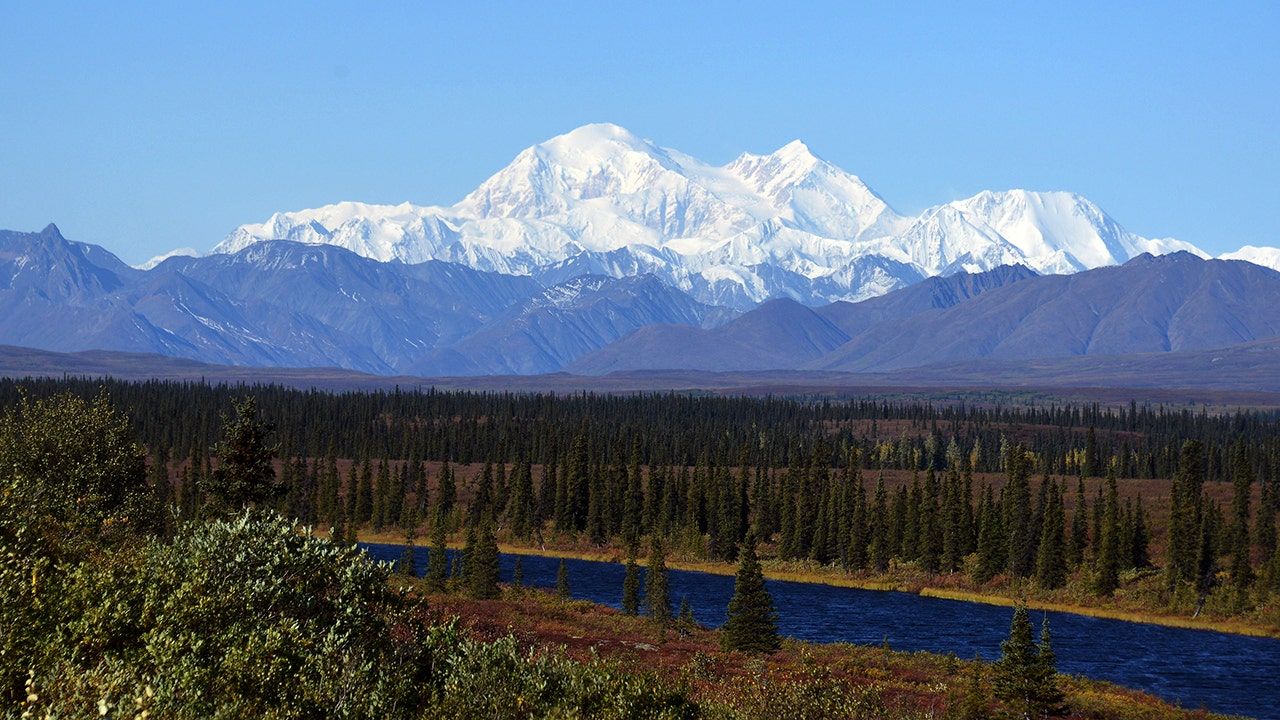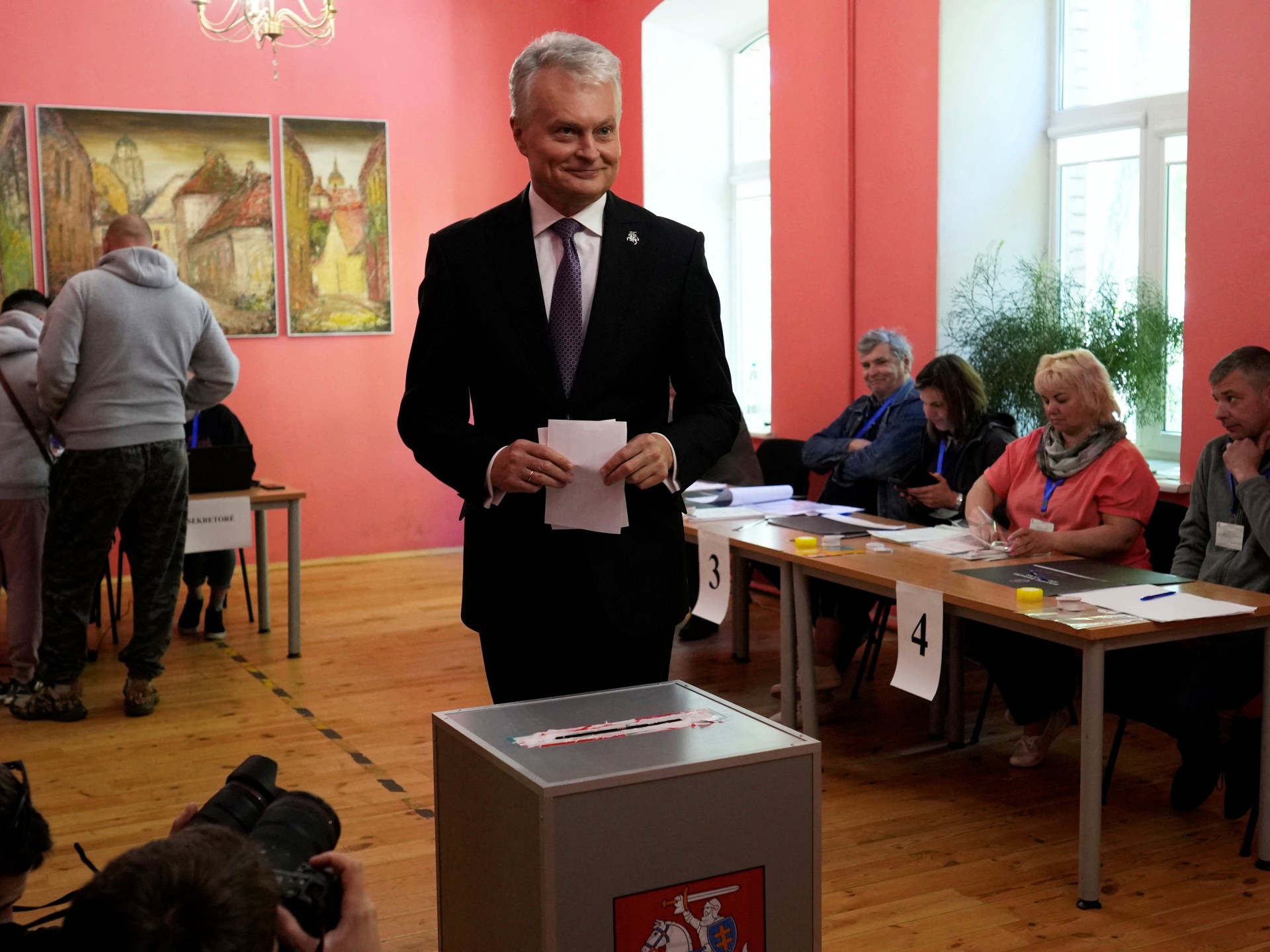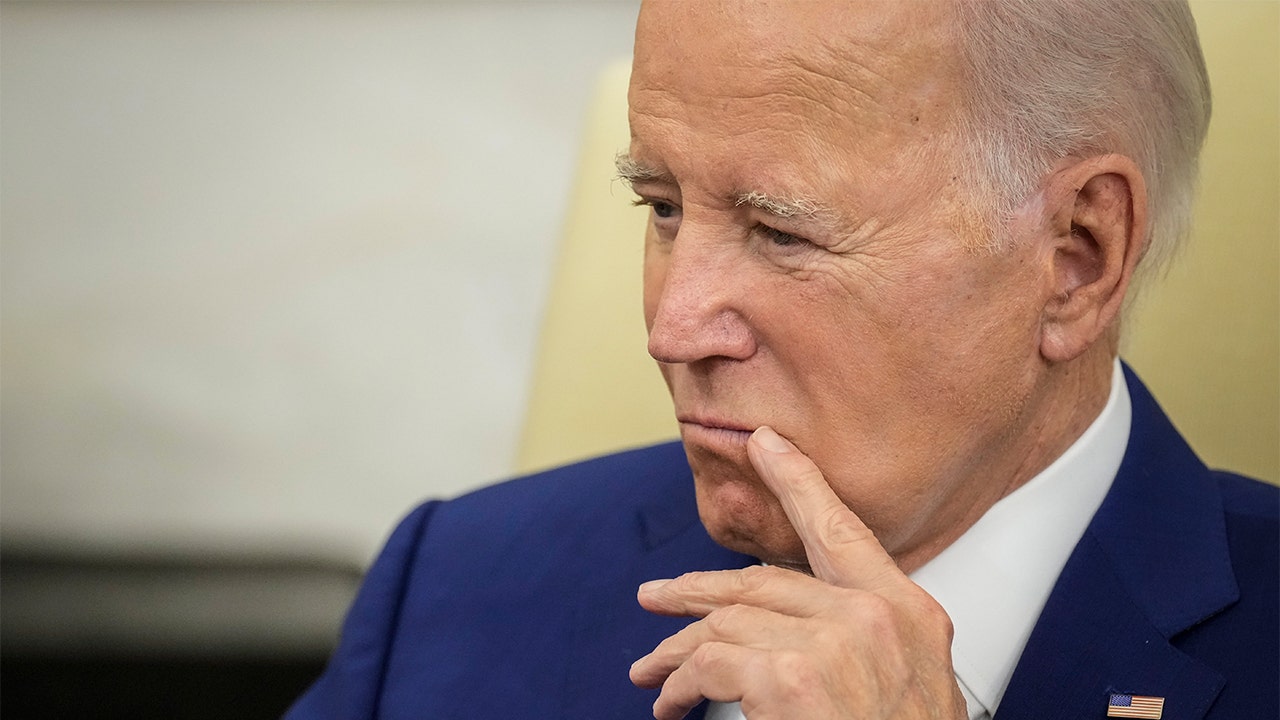Arizona
A Body Found 47 Years Ago in Arizona Is Finally IDed

Remains found by hikers in a shallow grave 47 years ago near a lake on the border of Arizona and Nevada have been identified. The man was Luis Alonso Paredes, who was from El Salvador but may have been living or working in the Las Vegas area at the time of his death, the Mohave County Sheriff’s Office announced Tuesday. The remains were discovered on Nov. 23, 1976, in a desert area in northwestern Arizona, just east of Lake Mohave. According to the sheriff’s office, an autopsy at the time revealed that the victim was likely in his early to mid-30s and had been shot in the head at close range. But despite authorities collecting fingerprints during the autopsy, the AP reports that the case soon went cold and the victim remained nameless for close to five decades.
The sheriff’s office said Tuesday in a news release that it revived its investigation in October by comparing the fingerprints to all available fingerprints records, leading to the identification. But authorities say they haven’t been able to locate any relatives of Paredes, who may have been employed by the US Coast Guard and the Navy in the San Francisco area about a decade before his death. The sheriff’s office asked the public to contact them with any information about the case or that could help them locate relatives of Paredes.
(Read more cold cases stories.)

Arizona
Arizona dispatch: students from 70 law schools and universities debate 20 proposed amendments to the US Constitution at model convention
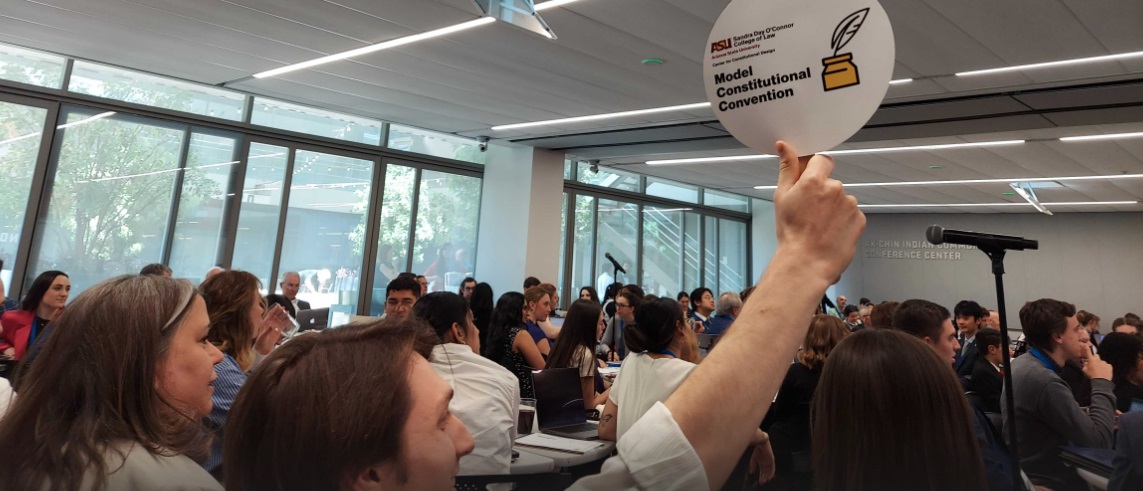
JP Leskovich is a rising 3L at the University of Pittsburgh School of Law and JURIST’s News Managing Editor. He filed this dispatch from Phoenix. This is the second in a series of dispatches he’s filing as an embedded reporter for JURIST at the Model Constitutional Convention sponsored by the Center for Constitutional Design at ASU Law.
Student delegates at the Model Constitutional Convention being held at Arizona State University’s Sandra Day O’Connor College of Law this Memorial Day weekend debated 20 proposed amendments to the US Constitution in their sessions Saturday.
The proposals covered a range of topics, including environmental protection, national service, future constitutional amendments, court reform, impeachment, gun control, electoral campaign periods, term limits, lifting the cap on the number of representatives in the House of Representatives, the right to marry, limiting presidential pardon power, prohibiting political gerrymandering, instituting restorative justice, abolishing death-qualified juries, Congressional representation for the territories, codifying tribal sovereignty, restricting eminent domain, restricting investment for members of Congress, and prohibiting discrimination based on sex and gender.
Contrary to the first day of the Convention, where we deliberated in smaller committees, the whole Convention—all 110 of us serving as official delegates—debated these amendments in plenary sessions. This resulted in wide-ranging debates on these topics, with heated but constructive conversation about our constitutional future. We were governed by a modified Roberts Rules, which provided us with structure so we could get things done in the time allotted (granted, it did take us nearly 8 hours!).
In addition to debating the proposals as written, we introduced and voted on a number of amendments to the proposals. This allowed the Convention to express its democratic will and change the proposals. For example, the Equal Rights Amendment was amended to include “sex, gender identity, and sexual orientation,” instead of just “sex.” There were a number of moments where we had to call “division,” which required the chair to count each of the votes. The fact that we need to call “division” so many times showed how contentious many of these amendments were and how difficult it can be to reach a consensus.
One of the first proposals that we discussed was one that would enshrine tribal sovereignty in the US Constitution. Tribal nations in the US are sovereigns, but their sovereignty is often infringed on. This proposal would codify the current status of Indian law in the US to protect tribal sovereignty from Supreme Courts that may not understand the intricacies of Indian law and therefore limit tribal sovereignty.
“Historically, the Supreme Court is not good at doing Indian law,” said Crispin South, a Choctaw law student at Arizona State University who represented Oklahoma and introduced the proposal. “I think Justice Brennan once called Indian law cases ‘chicken shit’ cases.” He pointed to Montana v. US and Oklahoma v. Castro-Huerta, saying that “those cases really for no reason abrogated the sovereignty of tribal nations with very feeble justification.” Therefore, he said, this proposed amendment is necessary to “right some precious wrongs and create a firewall for the current Indian law paradigm.”
During debate, delegates expressed support for recognizing tribal sovereignty and treating tribal nations as equals. As the delegate representing Wisconsin, I emphasized that there are 11 federally recognized tribes in the state and that constructive government-to-government relations are critical to ending the long chain of broken promises and broken treaties. South said he felt good about the debate:
I think it went well. The one bit of opposition we did get was requiring tribal nations to adopt the US Bill of Rights and I think Congress has really already done its job in enacting the Indian Civil Rights Act in that respect. So I don’t think it would be wise at this point to constitutionally require that the Bill of Rights be incorporated against tribes.
Another proposal that received considerable debate was giving the territories full voting rights in Congress. There seemed to be widespread support, with some delegates agitating to provide the territorial delegates to the Convention the ability to vote this weekend. Some expressed concerns about granting territories with small populations two Senators.
I spoke with Rafael Montero, who was a delegate representing Colorado but is from Puerto Rico, about territorial representation and what it was like to hear people debate his own rights. “I felt the lack of information in regards to the territories and their political status, especially in regards to taxation and how taxation works in relation to how the government already has power over the territories.” He went on to say that, “on the other hand, there were people that I felt very grateful for and in solidarity with for supporting and advocating for those rights.” He emphasized that it’s important for territories to have voting representation in Congress because they are already being governed by the federal government and the President.
There were some more contentious amendments proposed, like one that would prohibit discrimination on the basis of sex and gender. Some more conservative delegates expressed concerns about codifying abortion rights and transgender rights. And some of the women delegates noted that it was mostly men expressing opposition. This was definitely the most tense and contentious debate, but it still remained mostly respectful and productive.
In my first dispatch for this Convention, I expressed optimism that we could be a beacon for a new and more just constitutional order. After a day of debate, I am still optimistic that young Americans can build a better democracy, but that optimism is much more tempered and cautious. The threshold is high, and it is hard to build a broad enough coalition in a nation so divided. We are voting today, so we shall see.
Still, the fact that so many US law students and undergraduates gathered to discuss our constitutional future shows that there is a critical mass of young people that are hungering for democracy to work better.
Opinions expressed in JURIST Dispatches are solely those of our correspondents in the field and do not necessarily reflect the views of JURIST’s editors, staff, donors or the University of Pittsburgh.
Arizona
Arizona wins Pac-12 on walk-off single in conference's final event; announcer gives touching farewell
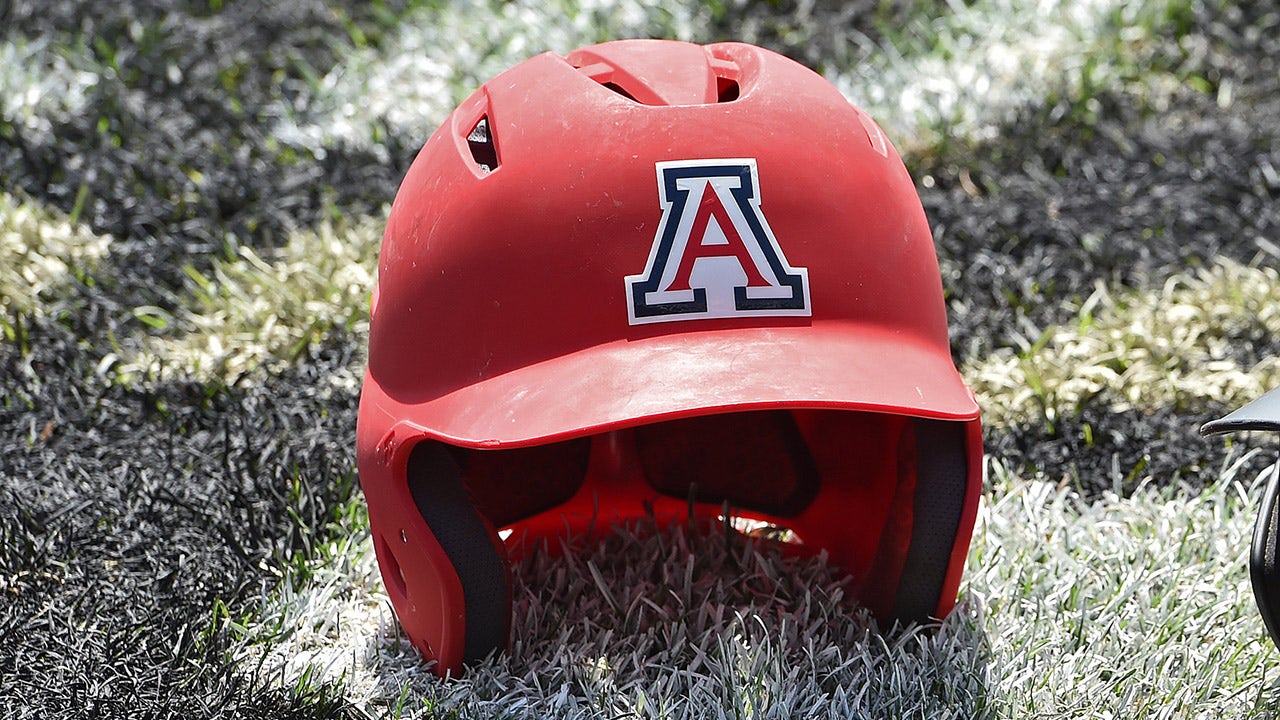
After more than 100 years, it’s the end of an era in college sports.
The Pac-12 was formed in 1915 as the Pacific Coast Conference, eventually becoming the Athletic Association of Western Universities, Pac-8, Pac-10, and now, what we know it as.
But, after 10 of the conference’s dozen schools are set to bolt for other leagues, it is no more.
CLICK HERE FOR MORE SPORTS COVERAGE ON FOXNEWS.COM
After 10 of the Pac-12’s dozen schools are set to bolt for other leagues, it is no more. (Peter Aiken/Getty Images)
The conference will continue as a two-team conference beginning in the 2024-25 academic year, with just Oregon State and Washington State left standing.
Well, the conference that we have grown accustomed to had, for all intents and purposes, its final contest on Saturday night – fittingly, it ended in wild fashion.
It was the conference’s baseball championship between USC and Arizona, which the Wildcats won on a walk-off single in the ninth.
“One last Pac-12 after dark – that’s how the Pac-12 comes to a conclusion,” conference network announcer Roxy Bernstein said on the call.
After the game, Bernstein took time to “put a bow” on the conference, and share what the conference has meant to not just him, but sports fans in general on the Pac-12 network’s final live broadcast.
“Pac-12 Networks began 12 years ago. I was one of the first hires and have been with the network since the launch. Tonight, I have the honor and the responsibility to say goodbye,” he said.

Scottsdale Stadium before the Pac-12 Baseball Tournament game between the Arizona Wildcats and the Stanford Cardinal on May 26, 2023, in Scottsdale, Arizona. (Zac BonDurant/Icon Sportswire via Getty Images)
“This conference is in my heart and soul. And like so many of you out there, it means more to me than I can express. No other conference can match the history of the Pac-12. And that’s what truly makes this the Conference of Champions,” he continued.
“Since the news came out last August about the breakup of the Pac-12, we’ve had a lot of time to digest the news, but the string is still fresh – it will be for a long time.”
Added his color analyst, Wes Clements, “If you played in the Pac-12, just understand, you have played in the best conference in the history of the NCAA.”

“One last Pac-12 after dark – that’s how the Pac-12 comes to a conclusion,” announcer Roxy Bernstein said. (Diamond Images via Getty Images)
CLICK HERE TO GET THE FOX NEWS APP
Arizona, Arizona State, Colorado, and Utah will head to the Big 12, UCLA, USC, Oregon, and Washington will be members of the Big 10, and Cal and Stanford jump ship to the ACC.
Follow Fox News Digital’s sports coverage on X, and subscribe to the Fox News Sports Huddle newsletter.
Arizona
Pac-12 Baseball Tournament: Arizona rallies to walk off USC, take conference’s final title

SCOTTSDALE—If this happened to be the first time all season you watched Arizona baseball—perhaps because you didn’t get the Pac-12 Network?—you’re in luck: this is how it’s been all year.
Tommy Splaine’s single to left scored Emilio Corona from 2nd base in the bottom of the 9th inning, giving the Wildcats a 4-3 win over USC in the Pac-12 Tournament championship game at Scottsdale Stadium.
“We did it again,” Corona said after the UA’s eighth walkoff victory this season.
Seven of those have come against conference opponents, including last week’s 4-3 win over Oregon State to clinch the regular season title. Arizona is now 10-9 in 1-run games this season.
“My heart can’t take too many of these more, but that’s how this team has been,” coach Chip Hale said. “We’ve kind of scrapped, found ways to win, found ways to score runs late.”
Arizona (36-21) was down 3-0 entering the bottom of the 7th, but that only told half the story. The Wildcats were getting no-hit through six by USC sophomore Caden Aoki, who despite pitching on three days’ rest had the UA offense completely overmatched. He struck out eight of the first 18 batters he faced, the only baserunner reaching on a fielding error.
All that changed in the 7th when, with 1 out, Mason White broke up the no-no with a solid single, then Maddox Mihalakis worked a 10-pitch walk to chase Aoki. The last pitch got away from the USC catcher, allowing White to go to 3rd, and he scored on a Blake McDonald sacrifice fly to get the UA on the board.
Arizona tied it in the bottom of the 8th on an RBI single from Brendan Summerhill and a sacrifice fly by Garen Caulfield. That rally began with a single by Splaine, the only player in the game with two hits, and for the tourney he was 5 for 15 after coming in hitting .228.
“It’s funny because Tommy can have some at-bats where there are strikeouts and he’s not doing much,” Hale said. “But it seems like when the the game’s on the line he has his best at-bats.”
Arizona having a chance to win the game wasn’t possible without senior right-hander Cam Walty, who a week after going 8.1 innings in the regular season finale against OSU tossed eight against USC. He allowed three runs and five hits, three of which could have been caught had UA outfielders not misplayed balls in the wind earlier in the game.
Anthony ‘Tonko’ Susac came in for the ninth and got three groundouts, setting the stage for the walkoff.
McDonald singled with 1 out and was run for by Corona, who has been unable to hit or play the field since taking a pitch on his right hand on May 16. The team’s leading base stealer swiped 2nd on the first pitch to Andrew Cain.
“We had the one out, got him on, and basically just said, hey, if you get a jump, go,” Hale said. “He’s an elite baserunner.”
After Cain was intentionally walked, Splaine then deposited a 2-1 pitch into left and Corona never broke stride rounding third before sliding headfirst across home plate just ahead of the throw.
“I just really wanted to pull through for our team,” Splaine said. “I didn’t have a great two first at-bats. I was just sitting off speed there.”
USC (31-28) built its 3-0 lead by taking advantage of shaky defense from Arizona. The first run came in the 3rd on a double to deep center that turned Summerhill around and went over his head, and in the 4th got back-to-back triples on balls right fielder Easton Breyfogle misplayed before a legit RBI double.
“This was really scary early,” Hale said. “The at-bats were not great, the defense was not great and we stuck with it. And again, it’s all predicated on our starting pitching. When those guys keep us in the game we’ll have a chance.”
Arizona earns the automatic bid to the NCAA Tournament, which will be its fourth consecutive trip, which was last accomplished in the 1960s. The 64-team tourney field will be announced Monday morning, but Sunday at 5:30 p.m. the NCAA will begin tweeting out the 16 regional host sites.
With an RPI of 31, the UA’s chances of being one of those are slim. The selection committee has traditionally given those to teams in the top 16, or within a spot or two.
“That’s obviously not my decision, and whatever they want to do with us is perfectly fine with us,” Corona said. “We just want to keep playing ball and keep playing with this group. This is a special group and I don’t think anyone wants it to be done anytime soon.”
-

 Movie Reviews1 week ago
Movie Reviews1 week agoIs Coppola’s $120M ‘Megalopolis’ ‘bafflingly shallow’ or ‘remarkably sincere’? Critics can’t tell
-

 Crypto1 week ago
Crypto1 week agoVoice of Web3 by Coingape : Showcasing India’s Cryptocurrency Potential
-

 Politics1 week ago
Politics1 week agoTrump predicts 'jacked up' Biden at upcoming debates, blasts Bidenomics in battleground speech
-

 News1 week ago
News1 week agoA bloody nose, a last hurrah for friends, and more prom memories you shared with us
-
/cdn.vox-cdn.com/uploads/chorus_asset/file/24038601/acastro_STK109_microsoft_02.jpg)
/cdn.vox-cdn.com/uploads/chorus_asset/file/24038601/acastro_STK109_microsoft_02.jpg) Technology1 week ago
Technology1 week agoMicrosoft’s Surface AI event: news, rumors, and lots of Qualcomm laptops
-

 News1 week ago
News1 week agoVideo: A Student Protester Facing Disciplinary Action Has ‘No Regrets’
-

 World7 days ago
World7 days agoPanic in Bishkek: Why were Pakistani students attacked in Kyrgyzstan?
-

 Politics1 week ago
Politics1 week agoAOC, 'baby girl' Marjorie Taylor Greene trade barbs in fiery Garland hearing: 'Are your feelings hurt?'














